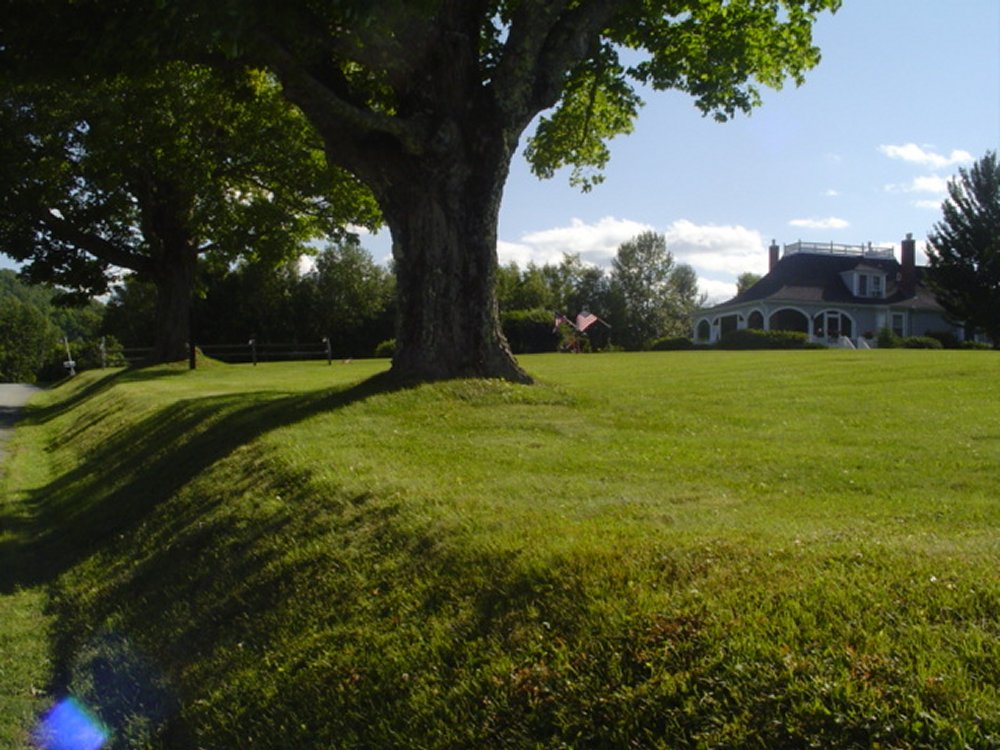
Set 2 of My
Maple Tree Favorite Photographs
Bob Jensen at
Trinity University
We live in
Sugar Hill, New Hampshire which got its name for the tapping of maple trees to
get
maple syrup, maple sugar, maple flavorings, and sweet maple paste in general.
We have upwards of 50 maple trees, but Erika and I really only have seven that are
the very large and very old maple trees

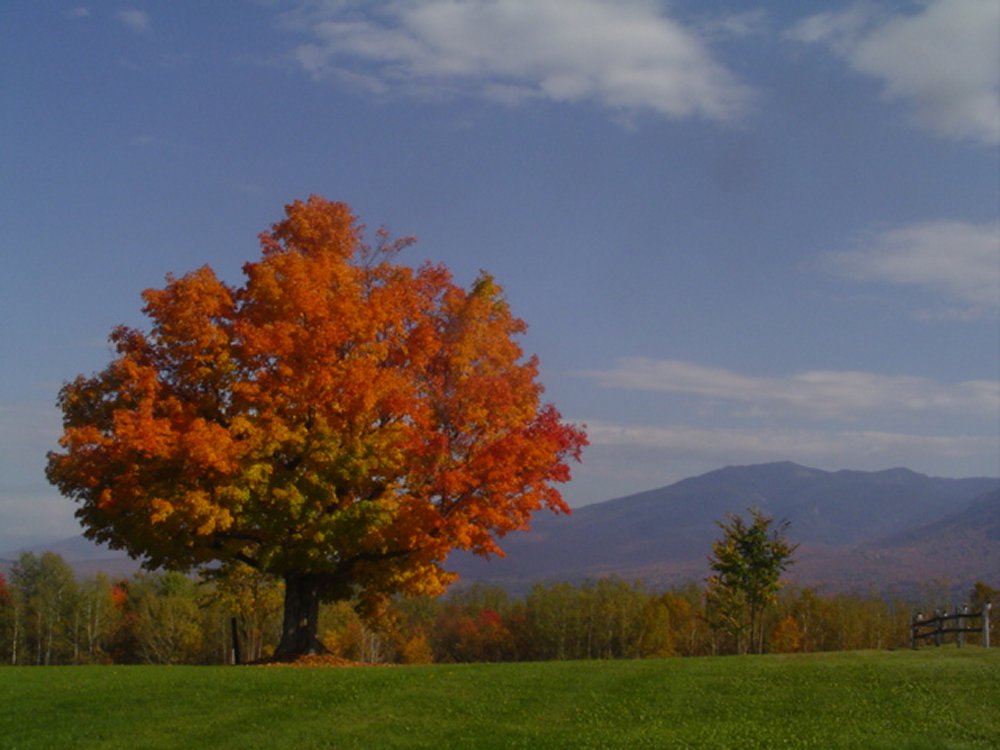
Two of OUR big old trees have been damaged by age and weather
Below is how a big old maple tree in our wildflower field looked a few years back
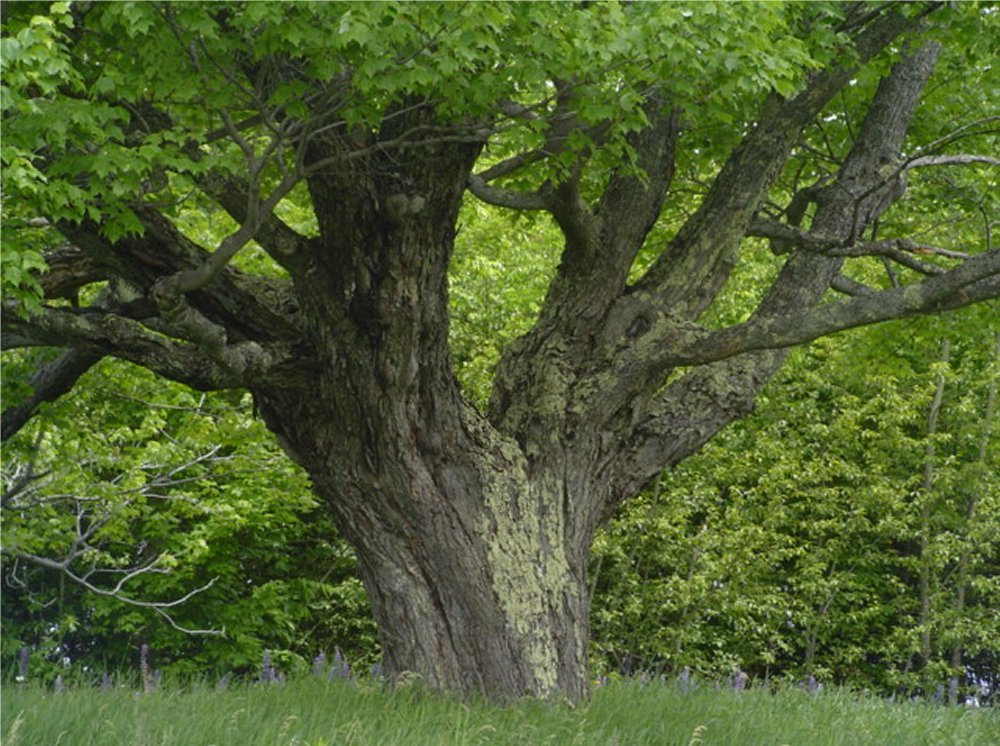
That old tree artfully looks like this now after it
split down the middle
I say "artfully" because two landscape painters asked for permission to print
their paintings of this split tree


Here's a big maple alongside my driveway behind the cottage

Because there was a hole in the middle of the trunk I covered the hole with tarps

I think the tarps protected the tree for a 4+ years, but in 2019 a big limb split from the tree trunk

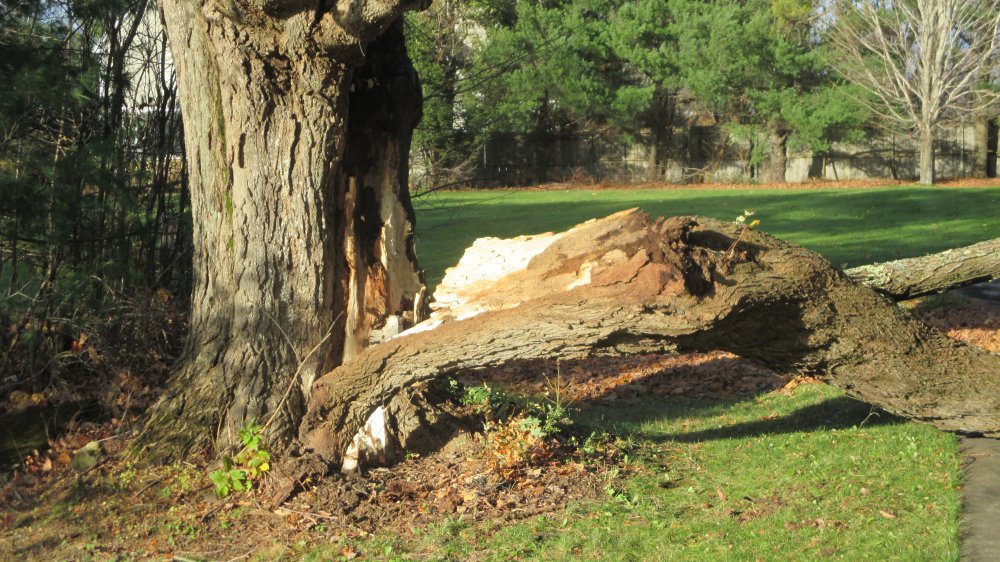
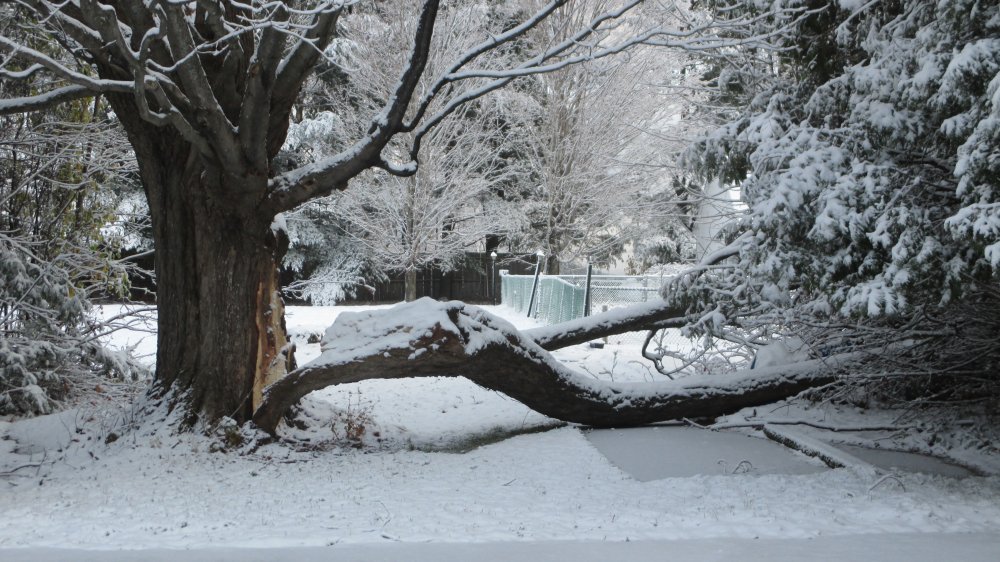
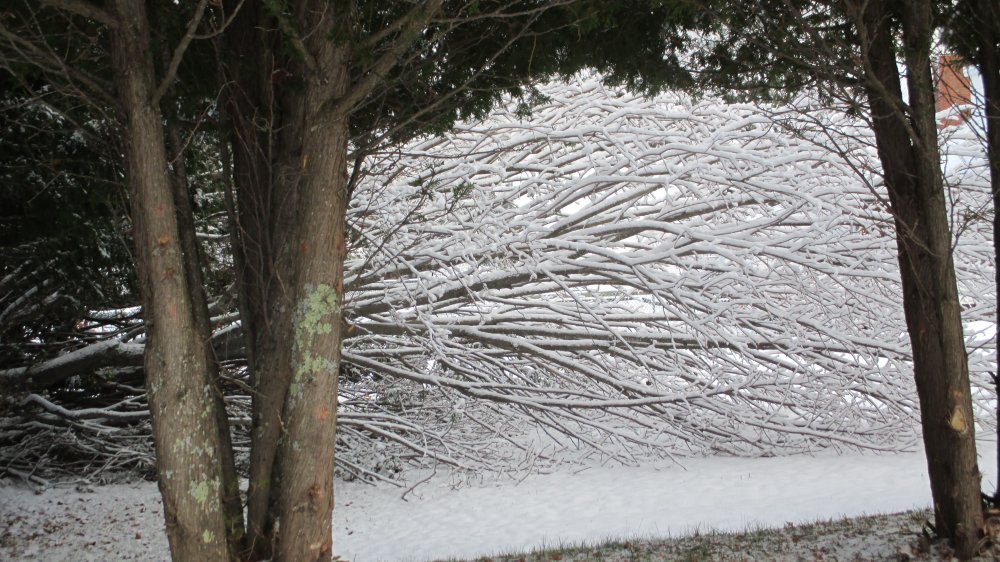
Then to add pain to misery in 2020 another limb split off the trunk
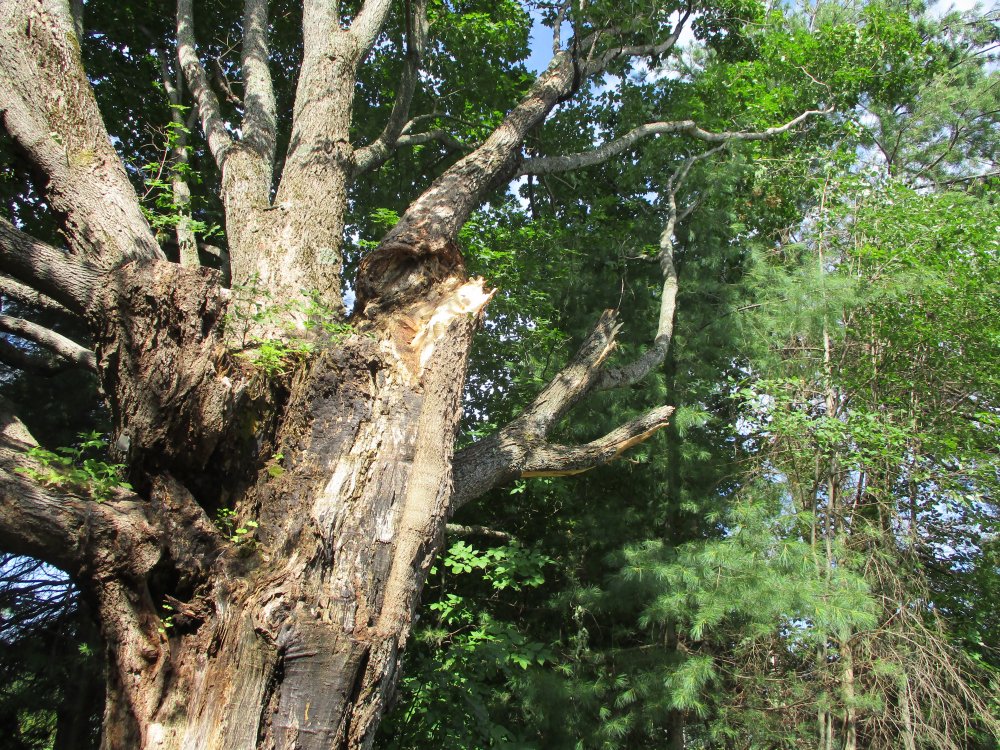
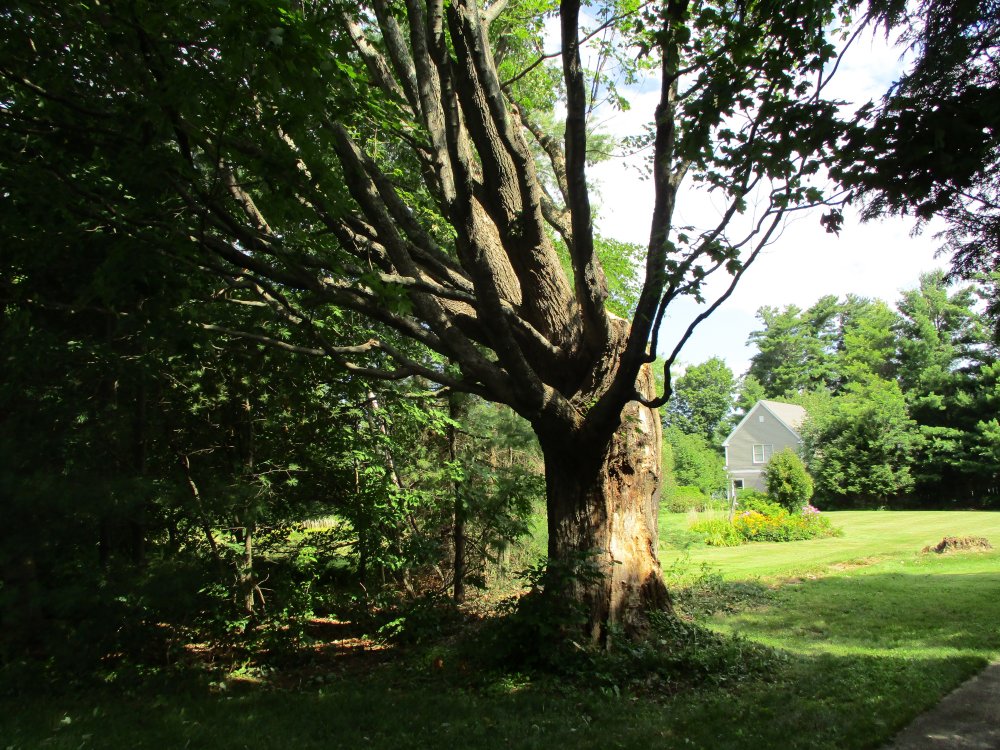
There's another big maple tree
beside my studio that has not yet split
If it does split during one of our hard winters or powerful storms
It may well split my studio

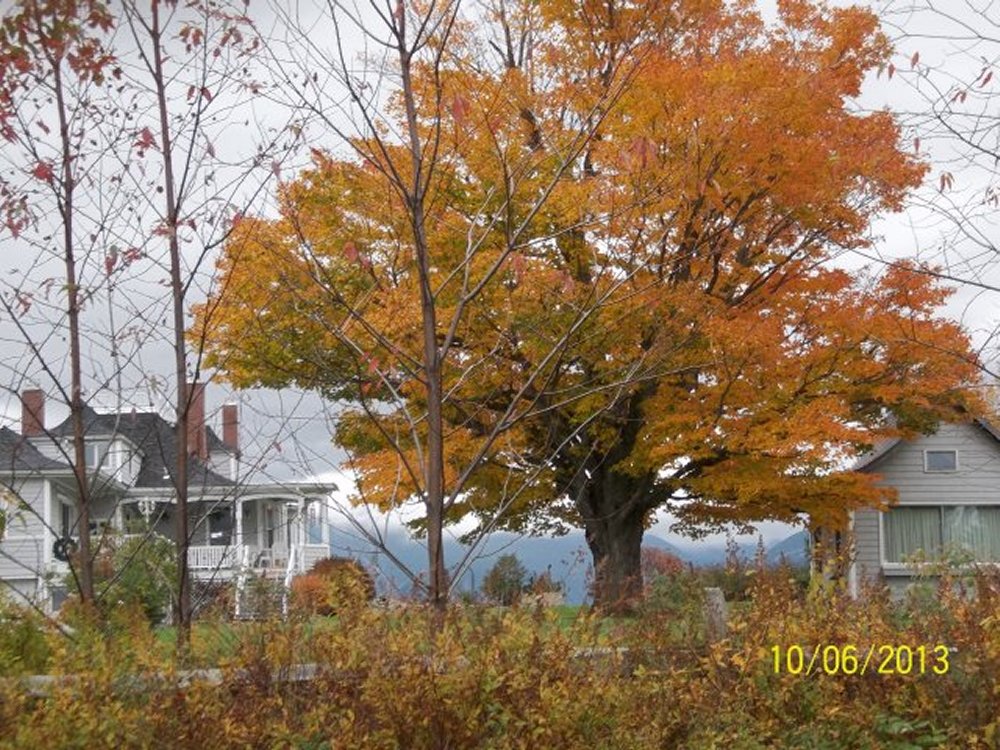
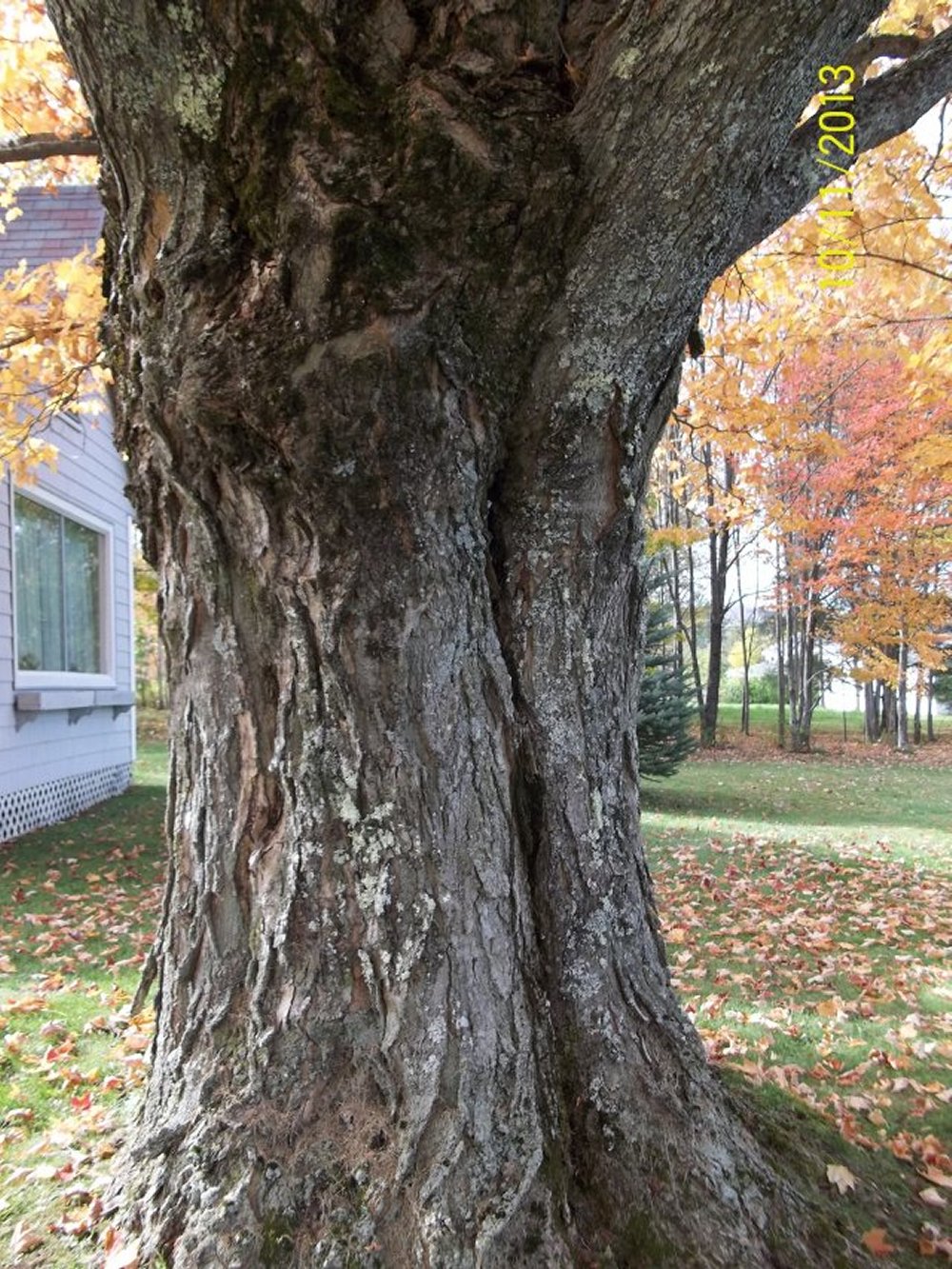
Snow often arrives early in our mountains
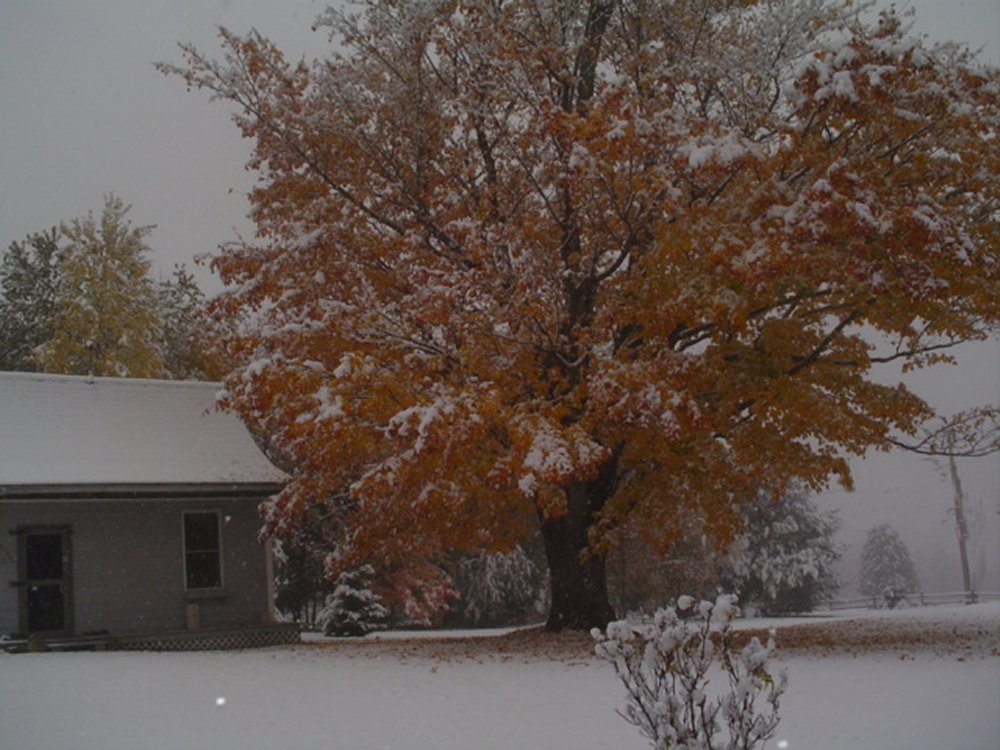
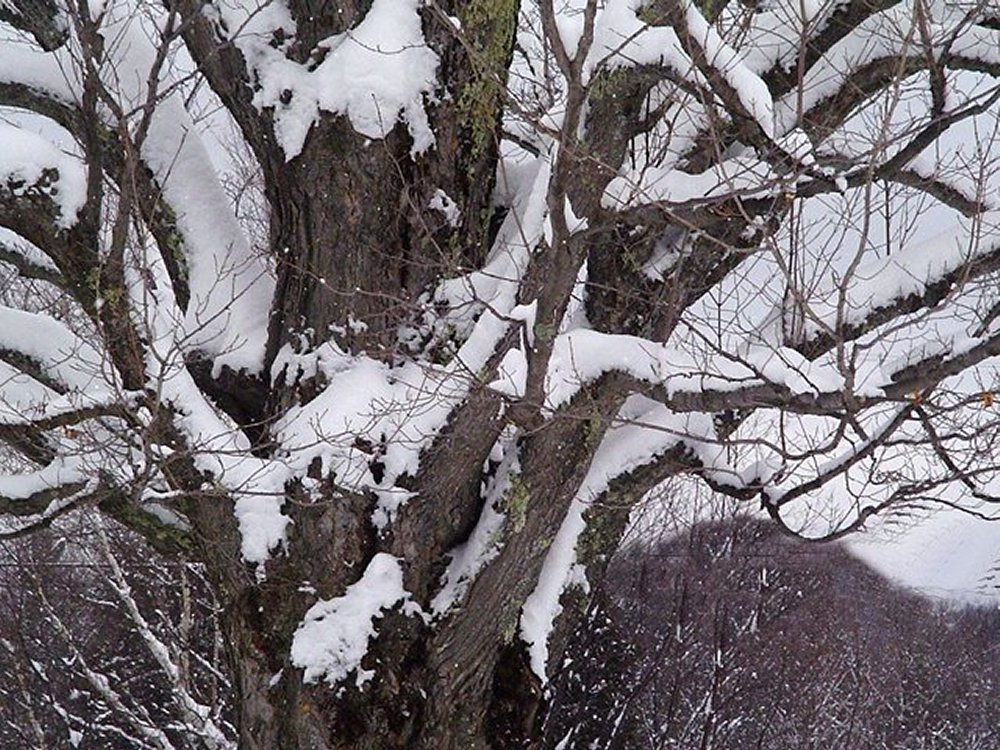
Maple trees add color to the golf course behind our cottage

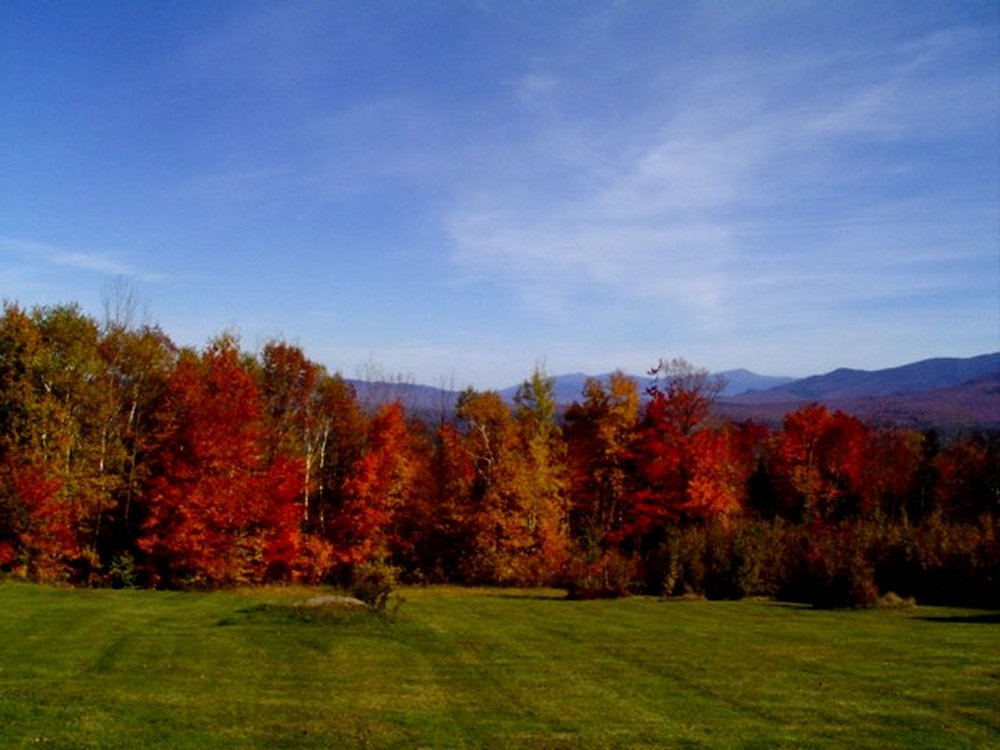
This is the view of Mt. Lafayette and Cannon Mountain from our living room

This is a zoomed view of Mt. Washington north of Mt. Lafayette and several other mountains
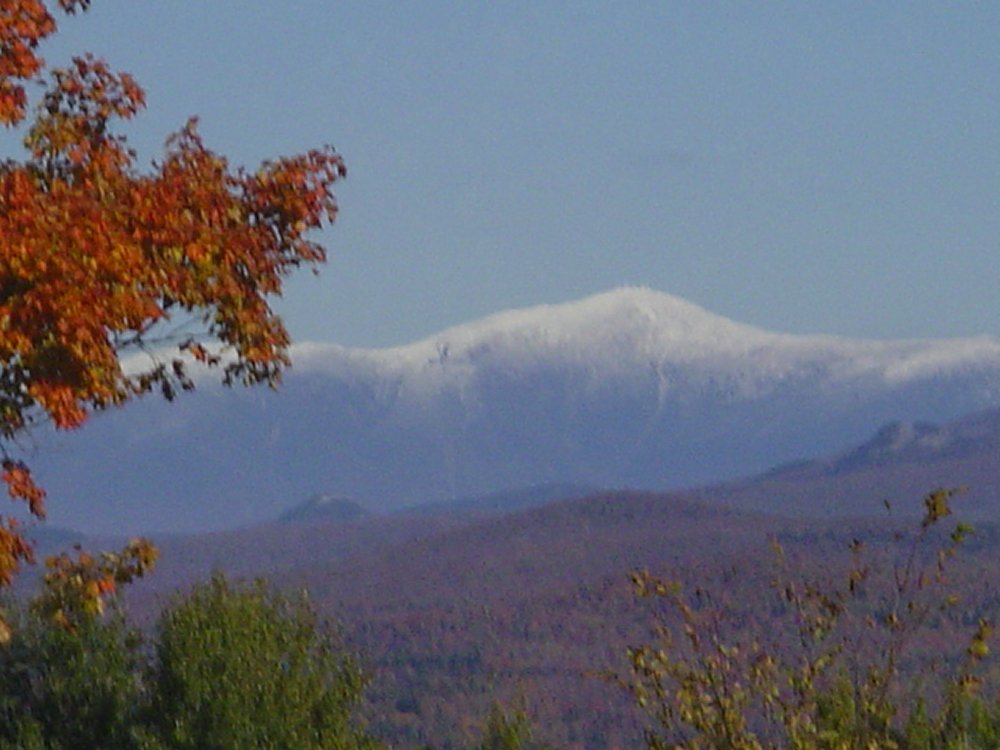
This is our view of snow-covered Mt. Washington after leaves are off the maple trees

Some
of Bob Jensen's Pictures and Stories
http://faculty.trinity.edu/rjensen/Pictures.htm
Set 1 of My
Maple Tree Favorite Photographs ---
http://faculty.trinity.edu/rjensen/Tidbits/Trees/Maple/Maples01.htm
Set 2 of My
Maple Tree Favorite Photographs ---
Scroll to top of this page
Maple Sugaring Photographs
Set 1 of Maple Sugaring Photographs
http://faculty.trinity.edu/rjensen/Tidbits/Trees/MapleSugar/01/01.htmSet 2 of Maple Sugaring Photographs
http://faculty.trinity.edu/rjensen/Tidbits/Trees/MapleSugar/02/02.htmSet 3 of Maple Sugaring Photographs
http://www.cs.trinity.edu/rjensen/Tidbits/Lavin/2018March/2018March.htmSet 4 of Maple Sugaring Photographs
http://www.cs.trinity.edu/rjensen/Tidbits/Lavin/2019April/2019April01.htm
Maple Syrup --- http://en.wikipedia.org/wiki/Maple_syrup
Maple syrup is a syrup usually made from the xylem sap of sugar maple, red maple, or black maple trees, although it can also be made from other maple species. In cold climates, these trees store starch in their trunks and roots before the winter; the starch is then converted to sugar that rises in the sap in the spring. Maple trees can be tapped by boring holes into their trunks and collecting the exuded sap. The sap is processed by heating to evaporate much of the water, leaving the concentrated syrup.
Maple syrup was first collected and used by the indigenous peoples of North America. The practice was adopted by European settlers, who gradually improved production methods. Technological improvements in the 1970s further refined syrup processing. The Canadian province of Quebec is by far the largest producer, responsible for about three-quarters of the world's output; Canadian exports of maple syrup exceed C$145 million (approximately US$141 million) per year. Vermont is the largest producer in the United States, generating about 5.5 percent of the global supply.
Maple syrup is graded according to the Canada, United States, or Vermont scales based on its density and translucency. Sucrose is the most prevalent sugar in maple syrup. In Canada, syrups must be at least 66 percent sugar and be made exclusively from maple sap[1] to qualify as maple syrup. In the United States, a syrup must be made almost entirely from maple sap to be labelled as "maple".
Maple syrup is often eaten with pancakes, waffles, French toast, or oatmeal and porridge. It is also used as an ingredient in baking, and as a sweetener or flavouring agent. Culinary experts have praised its unique flavour, although the chemistry responsible is not fully understood.
Maple Tree --- http://en.wikipedia.org/wiki/Maple_tree
Maples are variously classified in a family of their own, the Aceraceae, or together with the Hippocastanaceae included in the family Sapindaceae. Modern classifications, including the Angiosperm Phylogeny Group system, favour inclusion in Sapindaceae. The type species of the genus is Acer pseudoplatanus (Sycamore maple).
There are approximately 128 species, most of which are native to Asia, with a number also appearing in Europe, northern Africa, and North America. Only one species, the poorly studied Acer laurinum, is native to the Southern Hemisphere. Fifty-four species of maples meet the International Union for Conservation of Nature criteria for being under threat of extinction in their native habitat.
The word Acer derives from a Latin word meaning "sharp" (compare "acerbic"), referring to the characteristic points on maple leaves. It was first applied to the genus by the French botanist Joseph Pitton de Tournefort in 1700. The earliest known fossil maple is Acer alaskense, from the Latest Paleocene of Alaska.
From the Scout Report on April 5, 2013
Amidst a bucolic New England backdrop, the maple syrup industry is
going high-tech
High-Tech Means of Production Belies the Nostalgic Image of Maple Syrup
http://www.nytimes.com/2013/03/31/us/maple-syrup-takes- turn-toward-technology.html
Birch syrup explored as add-on to maple industry
http://online.wsj.com/article/AP38cd57f41f0646caad366c5ec16b 8201.html
Maple-syrup making way of life for Salem family
http://www.vindy.com/news/2013/apr/01/hidden-farm- yields-masterful-syrup-makin/
Produces hope for successful maple syrup season
http://lacrossetribune.com/news/local/producers-hope-for- successful-maple-syrup-season/ article_91ca78d0-98e7-11e2- 9322-001a4bcf887a.html
Maple Research Website
http://researchguides.uvm.edu/maple/
Maple Syrup
http://www.poetryfoundation.org/poem/171760
More of Bob Jensen's Pictures and
Stories
http://www.trinity.edu/rjensen/Pictures.htm
White Mountain News --- http://www.whitemtnews.com/
On May 14,
2006 I retired from
Trinity University after a long and
wonderful career as an accounting professor in four universities. I was
generously granted "Emeritus" status by the Trustees of Trinity University. My
wife and I now live in a cottage in the White Mountains of New Hampshire ---
http://www.trinity.edu/rjensen/NHcottage/NHcottage.htm
Bob
Jensen's Blogs ---
http://www.trinity.edu/rjensen/JensenBlogs.htm
Current and past editions of my newsletter called New
Bookmarks ---
http://www.trinity.edu/rjensen/bookurl.htm
Current and past editions of my newsletter called
Tidbits ---
http://www.trinity.edu/rjensen/TidbitsDirectory.htm
Current and past editions of my newsletter called
Fraud Updates ---
http://www.trinity.edu/rjensen/FraudUpdates.htm
Bob Jensen's past presentations and lectures
---
http://www.trinity.edu/rjensen/resume.htm#Presentations
Our
address is 190 Sunset Hill Road, Sugar Hill, New Hampshire
Our cottage was known as the Brayton Cottage in the early 1900s
Sunset Hill is a ridge overlooking with
New Hampshire's White Mountains to the East
and Vermont's
Green Mountains to the West
New Hampshire Historical Society --- http://www.nhhistory.org
Clement Moran Photography
Collection (antique New Hampshire photographs) ---
Click Here
http://www.library.unh.edu/digital/islandora/solr/search/moran/1/category%3APhotographs~slsh~Clement%5C%20Moran%5C%20Collection%2A~/dismax
Bob Jensen's Threads --- http://www.trinity.edu/rjensen/threads.htm
Bob Jensen's Home Page --- http://www.trinity.edu/rjensen/